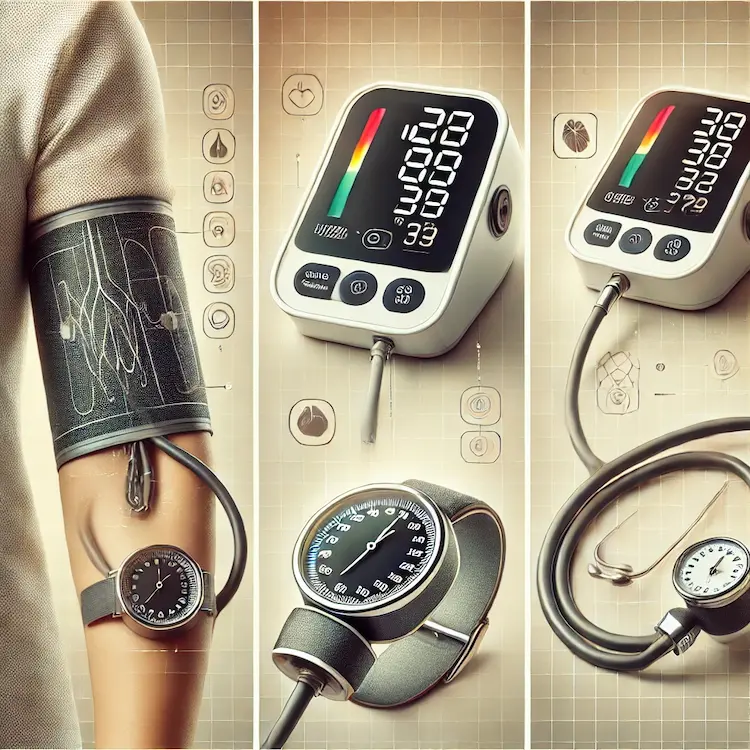Stroke is a leading cause of disability and death worldwide, with high blood pressure (hypertension) being one of its primary risk factors. Monitoring blood pressure regularly is crucial in stroke prevention, enabling individuals to detect and manage hypertension before it leads to severe health complications. Sphyg, a trusted supplier of clinically proven medical equipment, plays a vital role in empowering individuals with reliable and accurate blood pressure monitors.
This article explores how blood pressure monitors contribute to stroke prevention, comparing different monitoring methods, highlighting key statistics, and providing practical guidance for effective blood pressure management.
The Importance of Blood Pressure Monitoring in Stroke Prevention
Hypertension, often called the “silent killer,” frequently goes unnoticed until it results in severe health conditions such as strokes, heart attacks, or kidney disease. Regular monitoring allows individuals to track changes in blood pressure and take necessary action before complications arise.

Health and Societal Impact
- Global Burden of Hypertension: The World Health Organization (WHO) reports that 1.28 billion adults worldwide have hypertension, with less than half aware of their condition.
- Stroke Statistics: According to the CDC, 87% of all strokes are ischemic, meaning they occur due to a blocked artery, often linked to hypertension.
- Economic Impact: In the U.S. alone, strokes contribute to healthcare costs exceeding $50 billion annually, covering medical services, medications, and lost productivity.
By using home blood pressure monitors, individuals can proactively manage their health and reduce their risk of experiencing a stroke.
Comparing Blood Pressure Monitoring Methods
There are different ways to monitor blood pressure, each with its advantages and limitations. Below is a comparison of the most common methods:
| Method |
Description |
Advantages |
Disadvantages |
| Oscillometric Monitors |
Uses an electronic sensor to detect blood pressure from artery vibrations. |
Easy to use, automated, stores readings, clinically validated. |
Accuracy can be affected by body movement. |
| Mercury Sphygmomanometers |
Uses a mercury column to measure blood pressure manually with a stethoscope. |
Considered highly accurate and the gold standard. |
Requires training, not suitable for home use, and mercury toxicity concerns exist. |
| Aneroid Monitors |
A manual device with a dial gauge and inflatable cuff. |
Affordable, portable, no mercury hazard. |
Prone to mechanical inaccuracies, requires proper calibration. |
| Wearable Blood Pressure Monitors |
Smartwatches and wrist monitors that continuously track blood pressure trends. |
Convenient, real-time monitoring, syncs with health apps. |
Less accurate than upper-arm devices, affected by movement and positioning. |
Choosing the right type of monitor depends on individual needs, accuracy preferences, and ease of use.

How Blood Pressure Monitors Aid in Stroke Prevention
Early Detection of Hypertension
- Home monitoring allows individuals to track daily fluctuations in blood pressure.
- Enables early diagnosis, prompting timely medical intervention.
- Alerts individuals to potential hypertensive crises that require immediate attention.
Encourages Lifestyle Modifications
- Regular readings reinforce the impact of diet, exercise, and medication on blood pressure.
- Patients can monitor improvements after adopting heart-healthy habits such as reducing sodium intake or increasing physical activity.
Supports Doctor-Patient Collaboration
- Blood pressure logs provide valuable data for healthcare professionals.
- Helps physicians adjust medications or treatments based on real-world trends rather than single clinic readings.
- Reduces white coat hypertension (elevated blood pressure at the doctor’s office due to stress).
Reduces Stroke Risk Through Medication Adherence
- Patients who monitor blood pressure at home are more likely to adhere to prescribed medications.
- Provides motivation and accountability for maintaining healthy blood pressure levels.
Practical Tips for Effective Blood Pressure Monitoring
To ensure accurate readings and maximize the benefits of monitoring, follow these best practices:
- Choose a Clinically Validated Monitor
Select a device approved by regulatory bodies such as the FDA or validated by the American Heart Association (AHA).
Measure at the Right Time
-
- Take readings in the morning before eating or taking medications.
- Measure again in the evening to track fluctuations.
Proper Positioning Matters
-
- Sit upright with feet flat on the floor.
- Keep the arm at heart level.
- Avoid talking or moving during measurements.
Take Multiple Readings
-
- Record at least two measurements per session, 1–2 minutes apart.
- Maintain a blood pressure log for trends over time.
Avoid Common Mistakes
-
- Do not measure blood pressure immediately after drinking caffeine, exercising, or smoking.
- Ensure the cuff fits correctly—too tight or too loose can affect accuracy.
Actionable Recommendations for Stroke Prevention
- Monitor Blood Pressure Regularly – Aim for at least twice-daily checks if diagnosed with hypertension.
- Adopt a Heart-Healthy Diet – Reduce sodium intake, eat more potassium-rich foods, and consume whole grains.
- Exercise Consistently – Engage in at least 150 minutes of moderate-intensity exercise per week.
- Manage Stress Effectively – Practice deep breathing, meditation, or yoga to lower stress-related blood pressure spikes.
- Limit Alcohol and Tobacco Use – Excessive alcohol and smoking significantly raise stroke risk.
- Stay Hydrated and Maintain a Healthy Weight – Dehydration and obesity contribute to elevated blood pressure.
Conclusion
Blood pressure monitors serve as essential tools in stroke prevention by enabling early detection, promoting lifestyle changes, improving medication adherence, and enhancing collaboration between patients and healthcare providers. With the availability of advanced and easy-to-use monitoring devices, individuals can take control of their cardiovascular health and significantly reduce their risk of stroke.
Key Takeaways
- High blood pressure is a major risk factor for strokes, yet many remain unaware of their condition.
- Regular monitoring helps detect hypertension early and allows for timely intervention.
- Different blood pressure monitoring methods exist, each with unique benefits and limitations.
- Home monitoring supports lifestyle improvements, medication adherence, and informed healthcare decisions.
- Preventative measures such as diet, exercise, and stress management are crucial for stroke prevention.

